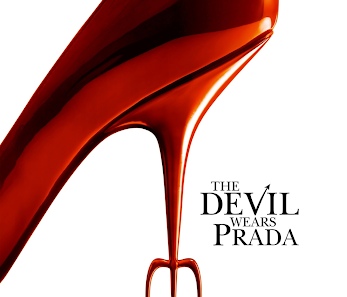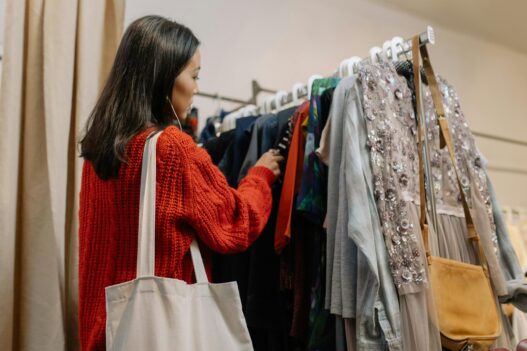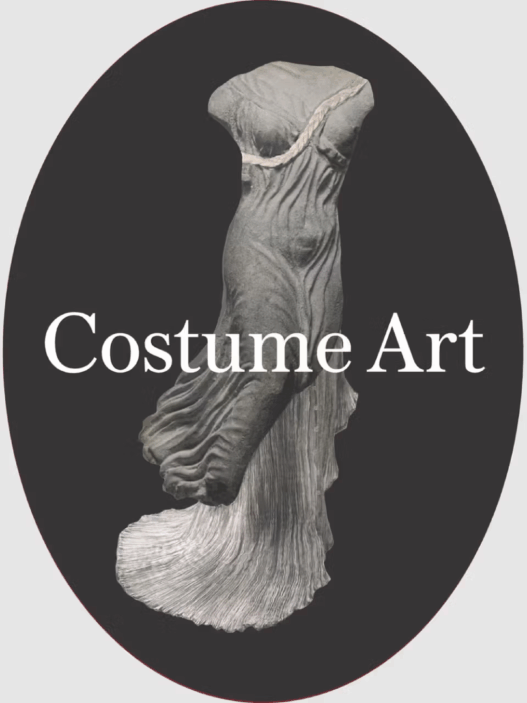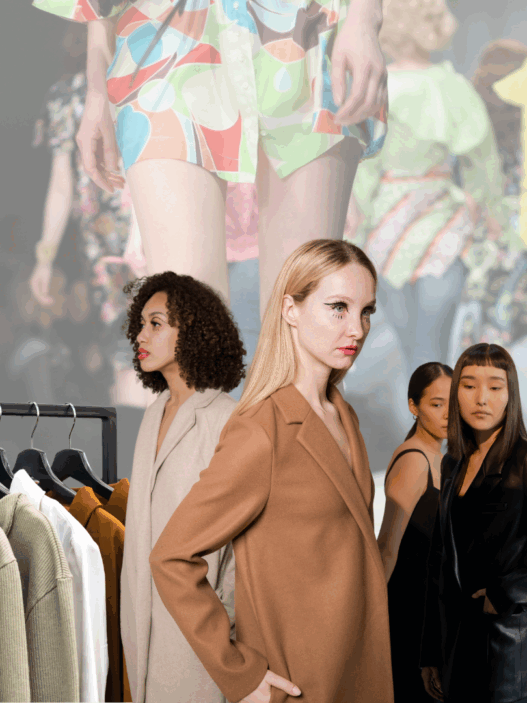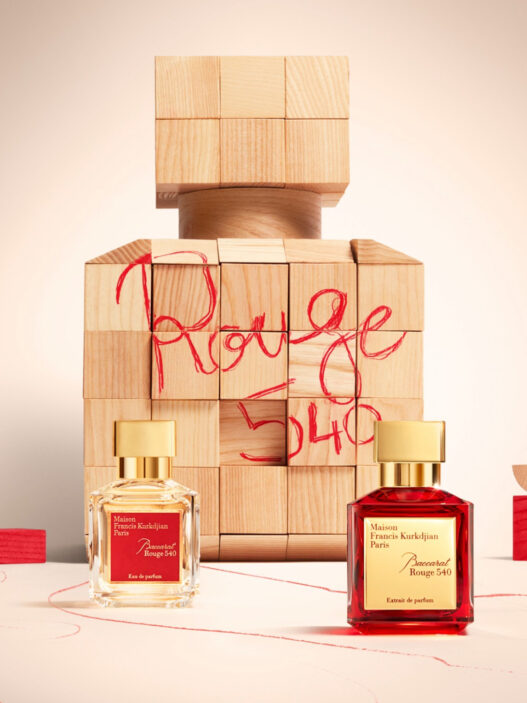When I first moved to London, the city’s dizzying cost-of-living was a shock to the system. I’d step off the bus, then hop on the Metropolitan line, having already splurged on a cheeky Blank Street iced coffee, only to find out that getting to a Zara store cost more than the Zara shirt itself. It was easier to spot a random pigeon in a bowtie than it was to spot a true bargain in Oxford Street. These days, I’m not alone in feeling the pinch; the “cost of being stylish” is something even High Street can’t hide from anymore.
With every trip to the supermarket or click on the energy bill comes the same question:
Can I actually afford to keep up with fashion?
For many, it feels like dressing well is actually becoming a luxury only the very well-off, or the ‘ultra-comfortable’, can enjoy. And it’s not just wardrobe dilemmas either: this crisis is reshaping how we think about value, style, and social responsibility in fashion.
Wondering how? Cue Usher and let’s dive in.
Inflation, Income Stagnation, and the Fight for Fashion
Let’s be honest: inflation is the villain that never leaves the party. According to recent data, UK clothing and footwear prices have crept steadily upwards this year, squeezing household budgets. When every pound spent needs to stretch, clothing drops further down the buying list. More and more of us are delaying or ditching “just-because” shopping, holding onto old favourites, or seeking out creative alternatives like swaps, and secondhand and thrifting apps.
Recent industry research from Deloitte shows that consumers across all age groups (especially younger shoppers) are becoming more price sensitive than ever before, often treating new clothes as occasional indulgences rather than routine purchases.
The effects aren’t just anecdotal. Over 60% of consumers globally say they are reducing luxury fashion purchases due to inflation, and 75% report increased fast fashion consumption to make ends meet. Even among my own friends, our favourite post-work rituals: browsing for a “treat yourself” outfit or splurging on a limited-edition gloss, have given way to group chats about the true cost of clothes and whether another branded advent calendar is worth the hype.
Advent Calendars, Beauty, and the Value Reckoning
Let’s talk about beauty advent calendars: the “it” gift of recent years, that are slowly creeping up after the Halloween decorations have been stored away. Once upon a time, these mammoth boxes bursting with skincare and mini-makeup were snapped up like secret festival tickets. But this year, as prices for everything soared, even the most loyal “calendar collectors” started doing the maths. “Is this actually worth the £400?” an influencer friend of mine wondered aloud in her TikTok review, weighing the value of tiny serums against her soaring heating bill.
It’s not just TikTok chatter. According to Vogue and Statista, brands like Benefit and Charlotte Tilbury saw sell-out launches, but consumer sentiment is shifting fast as scrutiny over value grows and social feeds are full of “Is it worth it?” breakdowns. I’ve noticed my own group of beauty-obsessed friends are now sharing links comparing advent calendar content to actual retail prices; nothing gets a free pass anymore, PR samples or not. If we do recommend something, it’s because we truly think it’s worth every penny.

Fast Fashion: Temporary Salvation or Ethical Trap?
So where do most of us turn? Fast fashion, of course. Retailers like Zara and H&M, once the champions of “accessible style”, now juggle between fighting price hikes and facing their own supply chain disruptions. Their secret? Ultra-efficient production and working on wafer-thin margins mean their prices rise more slowly than luxury labels’. But even fast fashion is inching upwards; Boohoo and ASOS raised prices this year thanks to climbing material and shipping costs.
The catch? The more we chase affordability, the more we risk propping up a system that underpays workers and trashes the planet. The Ellen MacArthur Foundation warns us that fashion churn creates one truckload of textile waste every second, much of it from brands selling on volume, not value. Inflation may have made fast fashion a financial lifeboat for some, but the cost is being outsourced elsewhere: to garment workers, to the environment, and, ultimately, to us as future inheritors of a damaged planet.
Sometimes I think back to when I was living in London: seeing the endless lines at Primark yet hearing the same people talk about “eco-friendly” shopping the next day. It’s hypocrisy clothed in the reality of modern pressures. Cheap clothes and eco values are seldom a neat fit.
Even Luxury Isn’t Immune (and Aspirational Shoppers Are Staying Home)
Contrary to popular belief, luxury fashion houses aren’t immune to the pinch. Bain & Company highlights that the post-pandemic boom has plateaued; even traditional big spenders are starting to hesitate, especially those “aspirational” shoppers: middle-class consumers who used to save up for the occasional treat from brands like Burberry or Gucci. More exclusive experiences and personalised shopping are their new tactics, but it’s a tough balancing act as price hikes risk alienating even their base.
Meanwhile, high-profile influencer gifting and over-the-top product drops are facing backlash, with consumers and professional reviewers calling out poor value and lack of transparency. I’ve seen beauty bloggers send back PR “gift” boxes because, as they say, “If I wouldn’t buy it for myself, why would I encourage my followers?”, or participating in waste management, “Why did X brand send me 40 shades of foundation? What will I do with the rest, it seems like a waste.”
Resale, Repairs, and a Return to Real Value
So what’s actually working? Secondhand style and wardrobe creativity. Online resale platforms like Vinted and Depop, once the side hustle for “thrifty” students, are now mainstream. Vinted alone has doubled its UK user base since 2020, showing that the drive for value is inseparable from an appetite for individual style and social responsibility. Clothing swaps, repair cafes, and DIY upcycling projects are everywhere. What used to be called “making do” is now a badge of honour.
Renting is also on the rise; for those rare nights out or weddings, it’s often cheaper (and more sustainable) to borrow than buy. Subscriptions sending out curated secondhand pieces or “re-loved” designer wear are letting more of us play with style without the burden of ownership costs.
Redefining Affordable (and Responsible) Fashion
Let’s face it: “affordable” now means more than a low sticker price. We can see it all around us; consumers, despite inflation, are actively searching for quality over quantity, durability over disposability, and ethics over exploitation. Whether it’s supporting a local brand that sews in living wages or investing in items that last longer (even if it means buying fewer things), the idea of “value” in fashion is being thoroughly redefined.
Fashion law and regulation will have to keep pace, too. From tighter disclosure requirements (think new EU labelling and eco transparency rules) to more robust labour protection standards in global supply chains, the push for industry-wide accountability is only accelerating. Young people, especially, won’t let brands backslide: a fact that’s apparent in every viral social media takedown of greenwashing claims.
My Two Cents (Why This Crisis Might Actually Be a Turning Point)
I don’t think we’ll ever go back to the days of mindless hauls or once-a-week Zara trips. Inflation has forced all of us, regardless of income, to re-examine what fashion means and who gets to participate in it. Style isn’t going extinct; it’s actually getting more creative, more collaborative, and, in a way, yes, more critical.
In the past years, I learned that sometimes the journey to the shop costs more than what you bring home. These days, my wardrobe glows with carefully chosen secondhand treasures, gifts with meaning, and a handful of investments that will outlast any trend. Makeup advent calendars? Only the ones with real value and real joy (P. Louise) are worth shouting about, not just unboxing.
So, is affordable fashion an illusion for the middle class? Maybe. But it’s also a wake-up call and a reason to demand better from brands, lawmakers, and ourselves. The “middle class mirage” is real, but so is our power to remake the industry from the closet up.






